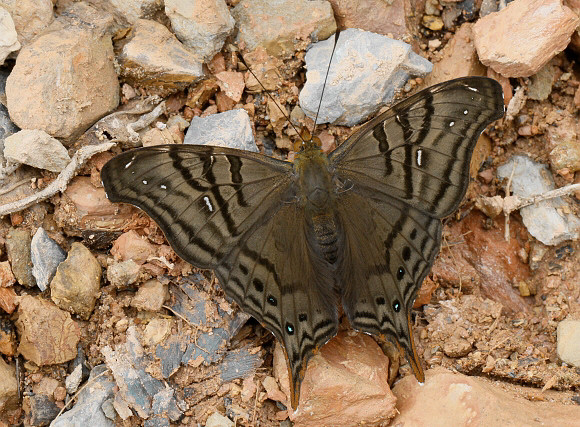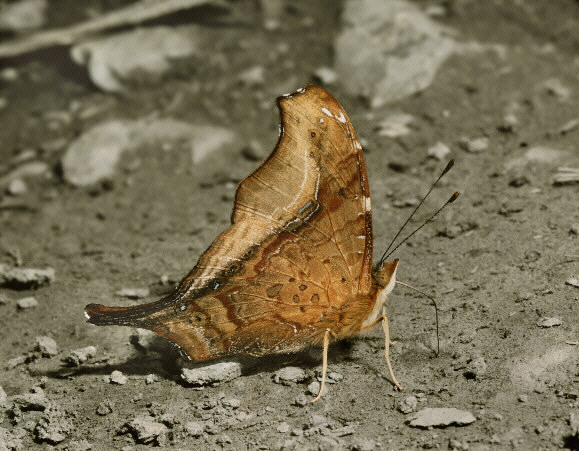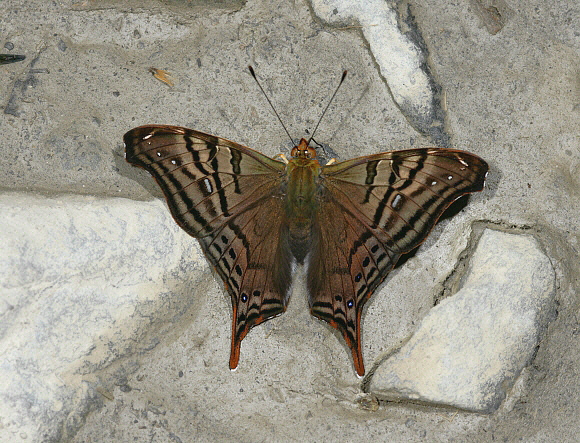
Introduction
The Nymphalinae includes many of the most well known and beautiful Palaearctic butterflies such as the Red Admiral Vanessa atalanta, Painted Lady Vanessa cardui, Camberwell Beauty Nymphalis antiopa, Comma Polygonia c-album, and Peacock Inachis io. Among the neotropical representatives are Colobura, Smyrna, Napeocles, Siproeta, Baeotus, Historis, Junonia, Anartia and Hypanartia.
The genus Hypanartia includes 14 species. They occur primarily in subtropical regions of the Andes and the Cordilleras of Central America. Some species, e.g. splendida and dione bear similarities to Marpesia Daggerwings, but can be distinguished from them by the presence of prominent white spots or dashes in the median and apical areas of the forewings, and by the angular apex.
Hypanartia dione occurs from Guatemala to to southern Peru.

Habitats
This is butterfly of the higher cloudforest regions, found at altitudes between about 1400-2700m.
Lifecycle
The early stages appear to be unknown. The following applies in general to butterflies in the genus Hypanartia : The eggs are pale in colour, and laid singly on the leaves of the foodplant. The larvae are typically dark and adorned with branched spikes. They live solitarily within a tent of leaves spun together with silk. The chrysalis is formed within the larval tent. In most Hypanartia species it is greyish, marked on the thorax with silver or gold spots.

Adult behaviour
Males habitually visit runnels and seepages along roadsides, and the wet rocky edges of mountain streams. They flit nervously from spot to spot until they find a patch of ground rich in dissolved minerals, where they drink, while periodically fanning their wings. After a few moments they usually close the wings, but will bask with wings outspread if mist or cloud obscures the sunlight.
